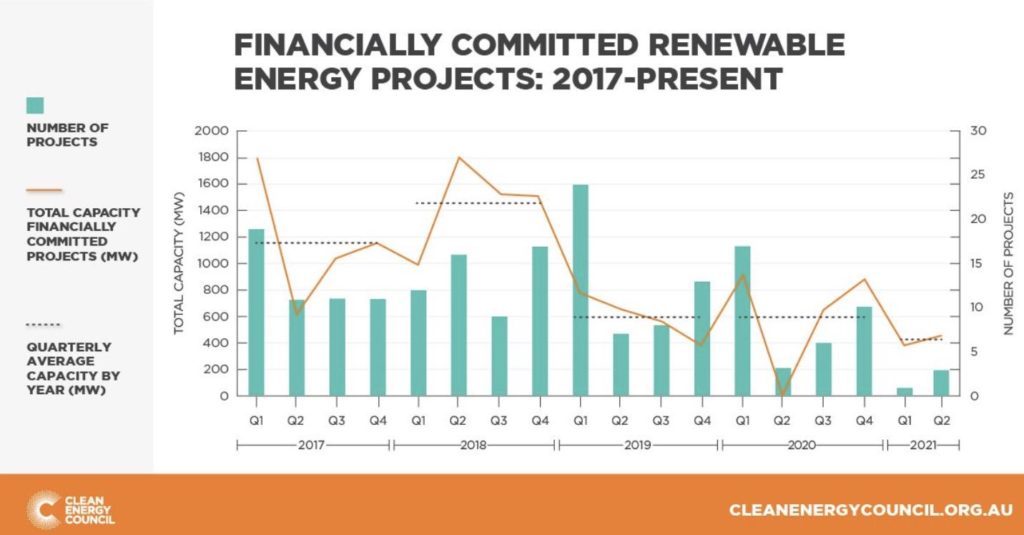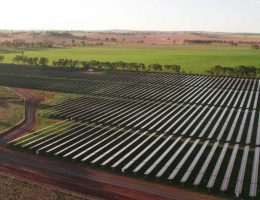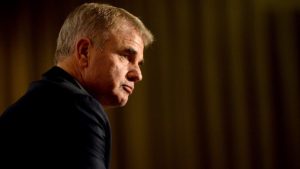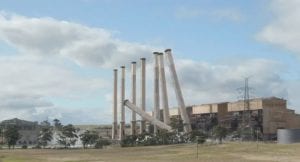It’s now almost three years to the day since the long-time anti-wind campaigner Angus Taylor was named as energy minister by then newly appointed prime minister Scott Morrison.
Taylor wasted little time in making his intentions clear: “There is too much intermittent (wind and solar) in the system,” he told radio broadcaster Alan Jones, the man who had invited Taylor to speak at a notorious “anti-wind” rally outside Parliament House in 2013, just before he became an MP.
Taylor doubled down a few days later, promising to back “reliable power” such as coal and gas, and it wasn’t long before he further nailed his colours to the mast, arguing that “baseload” coal and gas needed to be supported.
He then went on to Sky After Dark to declare that too much wind and solar was causing the “de-industrialisation” and was a “wrecking ball to the economy.”
See: Taylor launches extraordinary and ill-informed attack against wind and solar /
It hasn’t turned out quite the way he thought. Despite Taylor’s best efforts to set up a scheme to underwrite new fossil fuel projects, nothing has yet been built, thanks to the deep confusion about his own policies.
The renewable energy target that he tried to kill, coupled with strong corporate demand for cheap and clean energy, has brought another 8GW of large scale wind and solar into the grid since his appointment. Households and businesses have added at least another 5GW of rooftop solar.
There is probably another 2-3GW of wind and solar yet to complete connection, and rooftop solar is now running at around 3GW a year. It is changing the shape of the market.
“If you look at the last month we have consistently been above 25 per cent intermittent renewables, and that is a big number to be absorbing in the system and it is much higher in some States. This is a real challenge,” Taylor said back in 2018.
Wind and solar are now regularly delivering well over 50 per cent share of demand and production, and the Australian Energy Market Operator says it expects to be able to make the tweaks it needs to be able to handle up to 100 per cent wind and solar (albeit over short periods) by 2025.
But Taylor hasn’t given up on his cause. He is playing the long game and the uncertainty he has created is now starting to bite. As this graph from the Clean Energy Council illustrates, financing agreements for new projects have slowed to a trickle.
Taylor’s appointed a bunch of good mates and fossil fuel lobbyists to key institutions such as the Climate Change Authority and the Australian Renewable Energy Agency, and sought to change the mandates of both ARENA and the Clean Energy Finance Corporation and push them into fossil fuel technologies.
He’s ignored the widely-admired 20-year blue print for the renewables transition put together by AEMO, and instead – under the cover of confidentiality in “national cabinet” – sought to hijack the work of the Energy Security Board, attempting to push its market reforms towards the technologies of last century – coal, gas and hydro.
Taylor’s desire to control the debate is perfectly illustrated by the morning papers on this, the 3rd anniversary of his appointment.
Last week, the states agreed that the ESB advice should be released to the market, and to the public in full.
Taylor had to get the first word in, to try and control the narrative. And he had some pliant media to work with. The Australian Financial Review led its edition on Thursday with “Coal will be paid to firm up the grid”, followed by a page two commentary with the extraordinary headline: “Keep coal to encourage renewables.”
The Australian went one better: “Grid and bear it: subsidise coal”, shouted the front page lead, along with another commentary lamenting the absence of nuclear power, and a soft interview that gushingly said Taylor had “given the thumbs up” to the reforms he was pushing. Well, that’s a scoop!
In that interview, Taylor pointed to page 40 of the document he had refused to release to the market beforehand, saying gas and hydro could benefit from the ESB’s proposed capacity markets.
If so, it begs the question of why even the country’s biggest hydro and gas generator, the government owned Snowy Hydro, is opposing the reform, along with just about every other energy utility and technology provider in the country, bar a handful of coal generators.
The result is confusion, and yet more delay. As we noted on his second anniversary last year, Taylor is smart enough to know which buttons to push to create uncertainty in the market. His ruse has simply been to erect enough bollards in the market to stop progress.
The only successful antidote to the obfuscation of the federal Coalition has been the states, as it has been on electric vehicle policy and Covid.
The states are all firm with their net zero policies by 2050. Liberal governments in NSW, South Australia and Tasmania have announced ambitious policies to either transition away from coal to renewables (NSW), or to attract huge investments in green hydrogen (South Australia and Tasmania).
Labor states are following suit, and the construction of new transmission infrastructrure will unlock multiple gigawatts of new wind, solar and storage in both South Australia (taking that stake to 100 per cent renewables in the next five years), and NSW.
Taylor, meanwhile, is still trying to fiddle with the controls, and everyone is frustrated, and in a state of despair. As one key state energy advisor told RenewEconomy: “Why are the feds so scared of saying renewables are the cheapest and the best thing for the transition. I don’t know why it is such a hard conversation to have.”












